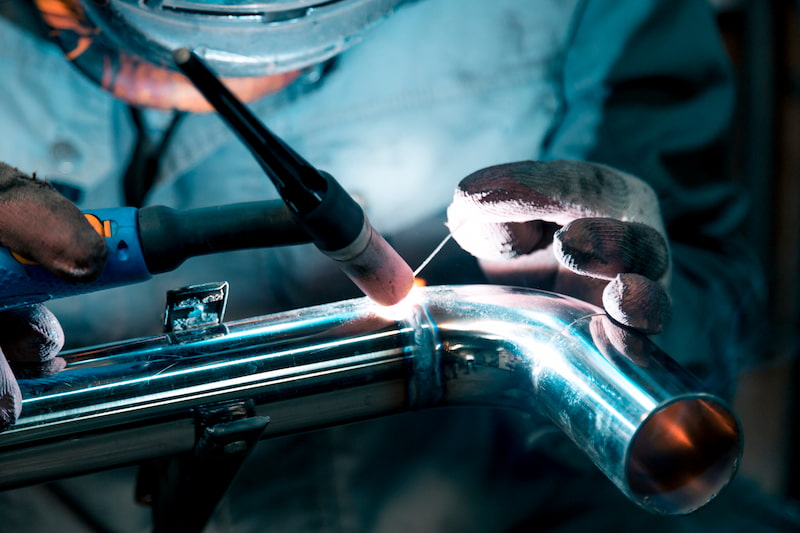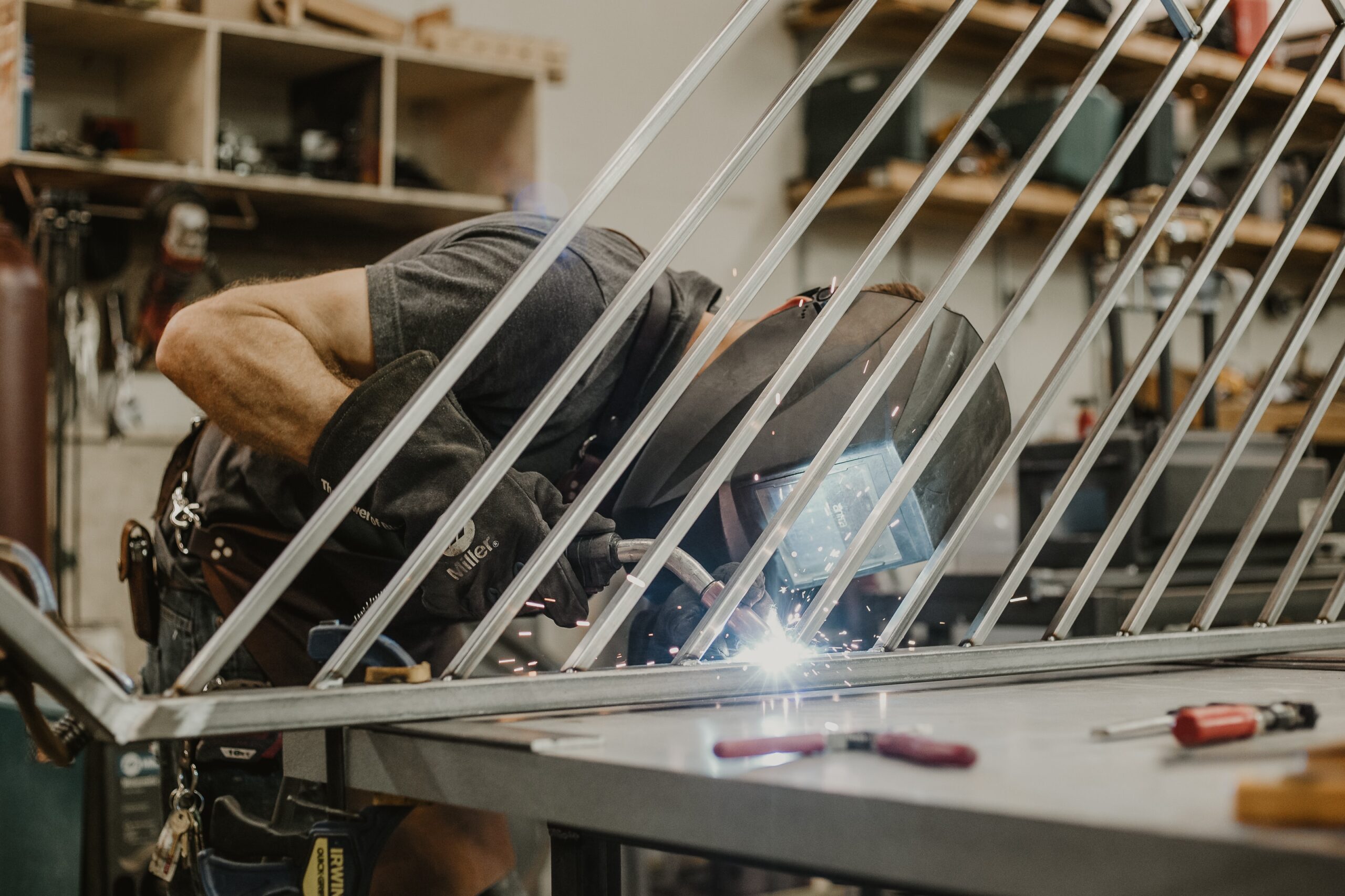Everything about Welding: Trick Insights Into Techniques and Finest Practices for Success
Welding includes a selection of techniques, each suited for specific materials and applications. Comprehending these approaches, such as GMAW, SMAW, and TIG, is vital for attaining ideal outcomes. The ideal devices and safety and security techniques can not be forgotten. As prep work and repairing play critical duties in the welding procedure, grasping these aspects can substantially improve the quality of the final product. What are the vital variables that assure a successful weld?
Understanding Different Welding Methods
Welding methods encompass a selection of techniques, each matched to particular applications and materials. Among the most typical methods are Gas Metal Arc Welding (GMAW), Secured Metal Arc Welding (SMAW), and Tungsten Inert Gas Welding (TIG) GMAW, also called MIG welding, is preferred for its rate and adaptability, making it suitable for thin products. SMAW, or stick welding, is preferred for its simplicity and performance in outdoor environments, specifically with thicker metals. TIG welding provides accuracy and control, making it appropriate for intricate job and non-ferrous steels (Montana Mobile Welding and Repair Fabrication). Each technique has its unique advantages and factors to consider, enabling welders to pick the very best approach based on the task's requirements, material type, and preferred results. Recognizing these methods is important for effective welding
Crucial Welding Equipment and Tools
While numerous welding techniques need specific skills, the appropriate equipment and tools are just as crucial for achieving top quality outcomes. Essential welding devices consists of welding machines, which vary depending on the technique-- such as MIG, TIG, or stick welding. Protective gear, including aprons, handwear covers, and headgears, guarantees safety and comfort throughout the procedure. Furthermore, clamps and components aid safeguard products in area, ensuring accuracy in welds. Consumables like welding rods, cable, and protecting gas are additionally crucial elements that influence the high quality of the weld. Devices such as cutters and grinders promote surface area prep work and post-weld completing, contributing to a professional end result. Spending in top notch devices inevitably boosts the performance and effectiveness of welding jobs.
Safety And Security Practices in Welding
Correct safety methods are necessary in the welding industry to protect employees from possible threats. Welders should put on proper personal protective tools (PPE), consisting of safety helmets with appropriate shading, handwear covers, and flame-resistant apparel. Sufficient air flow is vital to minimize exposure to damaging fumes and gases created during the welding procedure. In addition, workers need to be learnt the proper handling of welding devices to stop mishaps. Fire safety and security procedures, such as maintaining combustible materials away from the welding location and having fire extinguishers readily offered, are essential. Routine inspections of equipment and offices can help determine prospective dangers prior to they lead to accidents. By adhering to these safety and security techniques, welders can produce a safer working atmosphere and lessen threats connected with their trade.
Readying Products for Welding
Preparing materials for welding is an essential action that significantly affects the high quality and integrity of the final product (Belgrade). Correct prep work entails cleaning the surfaces to eliminate impurities such as rust, dirt, and oil, which can endanger the weld. Strategies such as grinding, sanding, or using solvents are frequently employed to achieve a tidy surface. Additionally, making sure that the products mesh comfortably is important; gaps can bring about weak welds. It's also essential to think about the placement and positioning of the components, as this will influence the ease of welding and the final end result. Choosing the suitable filler product and making sure compatibility with the base steels is necessary for attaining solid, sturdy welds.
Tips for Getting High-Quality Welds
Attaining high-grade welds calls for focus to information and adherence to finest techniques throughout the welding procedure. Appropriate joint preparation is essential, making sure surface areas are complimentary and clean from contaminants. Selecting the suitable filler product and welding technique based on the base steels is vital for excellent bonding. Preserving constant traveling speed and angle while welding can stop issues and advertise harmony. Furthermore, regulating heat input is crucial; excessive heat can cause warping and damaged joints. If needed, regularly evaluating the welds throughout the procedure allows for immediate changes. Finally, using ideal post-weld therapies, such as cleansing this link and anxiety alleviation, can improve the longevity and honesty of the weld, ultimately guaranteeing a successful end result.
Repairing Usual Welding Issues
Welding commonly offers obstacles that can influence the quality and integrity of the final item. Usual problems such as porosity, inconsistent weld beads, and getting too hot can emerge, each needing details fixing techniques. Recognizing these issues is crucial for welders to improve their abilities and achieve ideal results.
Porosity Troubles Clarified
Porosity can usually be ignored, it stays a critical concern in welding that can endanger the honesty of an ended up product. Porosity describes the existence of small gas pockets within the weld bead, which can lead and weaken the joint to early failure. This issue commonly emerges from impurities, wetness, or incorrect securing gas coverage throughout the welding process. To alleviate porosity, welders must validate that the base materials are tidy and dry, use appropriate shielding gases, and preserve consistent welding specifications. Regularly inspecting the equipment and environment can likewise help determine prospective problems before they manifest in the weld. Dealing with porosity properly is crucial for achieving strong, sturdy welds that satisfy quality standards.

Irregular Weld Beads
Inconsistent weld beads can significantly impact the top quality and toughness of a completed product. Different elements contribute to this concern, consisting of improper travel rate, wrong amperage setups, and inconsistent electrode angles. When the welder moves also swiftly, a bead might show up narrow and do not have infiltration, while moving also slowly can create extreme accumulation. Additionally, utilizing the wrong amperage can cause either damaging or excessive spatter, both of which concession weld integrity. The welder's strategy, such as inconsistent lantern activity, can additionally result in irregular grain appearance. To alleviate these issues, welders should concentrate on keeping constant, regulated motions and making certain appropriate tools setups to attain harmony in their welds. Consistency is essential to attaining dependable and solid welds.
Getting Too Hot and Warping Issues
Excessive warm during the welding process can bring about significant getting too hot and contorting concerns, impacting the architectural stability of the workpiece. These troubles typically manifest as distortion, which can compromise positioning and fit-up, making more assembly challenging. Variables adding to overheating include the option of welding criteria, such as voltage and take a trip rate, as well as the kind of product being welded. To minimize these concerns, welders ought to preserve constant travel rate and suitable warm input while monitoring the work surface temperature. Furthermore, preheating or post-weld warmth treatment can assist minimize stress and anxieties created by fast cooling - Montana Mobile Welding and Repair Welding. Routine assessment and adherence to finest methods are essential in protecting against overheating and ensuring the durability and dependability of bonded frameworks
Regularly Asked Concerns
What Are the Profession Opportunities in the Welding Sector?
The welding industry provides varied job chances, including settings as welders, engineers, inspectors, and Clicking Here teachers. Specialists can work in manufacturing, construction, aerospace, and auto markets, gaining from strong need and competitive incomes in numerous functions.
Exactly How Can I Improve My Welding Rate Without Compromising Quality?
To enhance welding speed without giving up quality, one need to exercise efficient techniques, maintain tools, optimize setups, and improve hand-eye coordination. Routine training and seeking feedback can also significantly add to accomplishing much faster, top quality welds.
What Certifications Are Readily Available for Welders?
Many accreditations exist for welders, consisting of those from the American Welding Culture (AWS), the National Facility for Building Education And Learning and Research Study (NCCER), and various industry-specific organizations. These credentials enhance employability and show skill effectiveness.
Exactly How Does Welding Influence the Residences of Metals?
Welding affects the residential rf welding or commercial properties of metals by altering their microstructure, which can cause modifications in toughness, ductility, and hardness. Warm input and air conditioning rates during the process considerably affect these product characteristics.
Can I Bonded Dissimilar Metals With Each Other?
